Bloom Clock/Keys/New Hampshire/July/White Flowers
< Bloom Clock < Keys < New Hampshire < July
This page is part of a dichotomous key for plants recorded as blooming in New Hampshire during the month of July.
These plants have the following traits:
- White flowers
Achillea millefolium
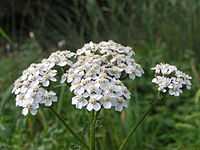 Heads Wikipedia • Commons • Wikibooks (horticulture) • Wikibooks (subject) • Wikispecies • Fruit and seed clock | Profile for Achillea millefolium (Common Yarrow)
Recent Logs
| ||||||||||
Global data:
Temperate zone season(s): Late Spring, Early Summer, Mid Summer, Late Summer, Early Fall, Mid Fall, Late Fall
Aralia hispida
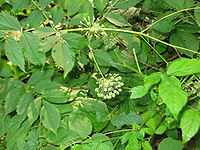 Wikipedia • Commons • Wikibooks (horticulture) • Wikibooks (subject) • Wikispecies • Fruit and seed clock | Profile for Aralia hispida (Bristly Spikenard, Bristly Sarsaparilla)
Recent Logs
| ||||||||
Global data:
Temperate zone season(s): Early Summer, Mid Summer, Late Summer, Early Fall
Aster novae-angliae
 Head Wikipedia • Commons • Wikibooks (horticulture) • Wikibooks (subject) • Wikispecies • Fruit and seed clock | Profile for Aster novae-angliae (New England Aster)
Recent Logs
| ||||||||||
Global data:
Temperate zone season(s): Early Summer, Mid Summer, Late Summer, Early Fall, Mid Fall, Late Fall
Calystegia sepium
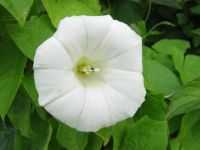 Wikipedia • Commons • Wikibooks (horticulture) • Wikibooks (subject) • Wikispecies • Fruit and seed clock | Profile for Calystegia sepium (Hedge Bindweed)
Recent Logs
| ||||||||||
Global data:
Temperate zone season(s): Mid Summer, Late Summer, Early Fall
Chimaphila umbellata
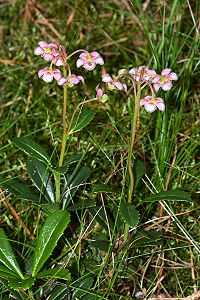 Wikipedia • Commons • Wikibooks (horticulture) • Wikibooks (subject) • Wikispecies • Fruit and seed clock | Profile for Chimaphila umbellata (Pipsissewa)
Recent Logs
| ||||||||||
Global data:
Temperate zone season(s): Mid Summer
Cicuta maculata
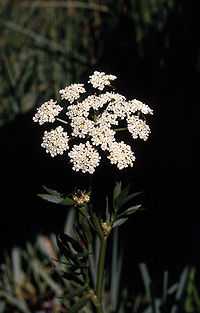 Wikipedia • Commons • Wikibooks (horticulture) • Wikibooks (subject) • Wikispecies • Fruit and seed clock | Profile for Cicuta maculata (Spotted Water Hemlock)
Recent Logs
| ||||||||||||||||||||
Global data:
Temperate zone season(s): Mid Summer, Late Summer
Dalibarda repens
| Wikipedia • Commons • Wikibooks (horticulture) • Wikibooks (subject) • Wikispecies • Fruit and seed clock | Profile for Dalibarda repens (Dewdrop, Robin Runaway)
Recent Logs
| ||||||||||||
Global data:
Temperate zone season(s): Early Summer, Mid Summer, Late Summer
Daucus carota
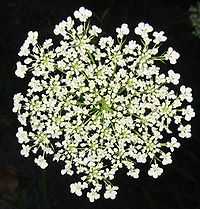 Umbel Wikipedia • Commons • Wikibooks (horticulture) • Wikibooks (subject) • Wikispecies • Fruit and seed clock | Profile for Daucus carota (Carrot, Queen Anne's Lace)
Recent Logs
| ||||||||||
Global data:
Temperate zone season(s): Early Summer, Mid Summer, Late Summer, Early Fall, Mid Fall
Erigeron annuus
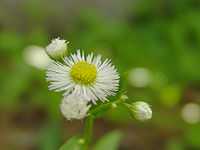 Heads Wikipedia • Commons • Wikibooks (horticulture) • Wikibooks (subject) • Wikispecies • Fruit and seed clock | Profile for Erigeron annuus (Fleabane)
Recent Logs
| ||||||||
Global data:
Temperate zone season(s): Late Spring, Early Summer, Mid Summer, Late Summer
Eriocaulon aquaticum
 Wikipedia • Commons • Wikibooks (horticulture) • Wikibooks (subject) • Wikispecies • Fruit and seed clock | Profile for Eriocaulon aquaticum (Pipewort)
Recent Logs
| ||||||||||||||
Global data:
Temperate zone season(s): Mid Summer, Late Summer
Eupatorium perfoliatum
| Flowering plant Wikipedia • Commons • Wikibooks (horticulture) • Wikibooks (subject) • Wikispecies • Fruit and seed clock | Profile for Eupatorium perfoliatum (Boneset)
Recent Logs
| ||||||||
Global data:
Fragaria vesca
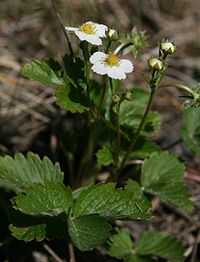 flowering plant Wikipedia • Commons • Wikibooks (horticulture) • Wikibooks (subject) • Wikispecies • Fruit and seed clock | Profile for Fragaria vesca (Woodland Strawberry)
Recent Logs
| ||
Global data:
Temperate zone season(s): Mid Spring, Late Spring, Late Summer, Early Fall
Frangula alnus
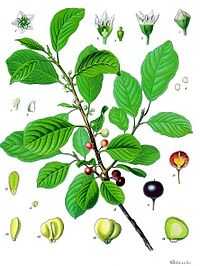 Wikipedia • Commons • Wikibooks (horticulture) • Wikibooks (subject) • Wikispecies • Fruit and seed clock | Profile for Frangula alnus (Glossy Buckthorn)
Recent Logs
| ||||||||||||
Global data:
Temperate zone season(s): Early Summer, Mid Summer
Galium triflorum
| Galium triflorum Wikipedia • Commons • Wikibooks (horticulture) • Wikibooks (subject) • Wikispecies • Fruit and seed clock | Profile for Galium triflorum (Fragrant Bedstraw)
Recent Logs
| ||||||||||||
Global data:
Temperate zone season(s): Early Summer, Mid Summer, Late Summer, Early Fall, Mid Fall, Late Fall
Gaultheria procumbens
| Gaultheria procumbens in flower Wikipedia • Commons • Wikibooks (horticulture) • Wikibooks (subject) • Wikispecies • Fruit and seed clock | Profile for Gaultheria procumbens (Eastern Teaberry, Checkerberry, Boxberry and American Wintergreen)
Recent Logs
| ||||||||||||||||||
Global data:
Temperate zone season(s): Mid Summer, Late Summer
Hemerocallis
.jpg) Flower of H. fulva, one of the most commonly encountered daylilies Wikipedia • Commons • Wikibooks (horticulture) • Wikibooks (subject) • Wikispecies • Fruit and seed clock | Profile for Hemerocallis (Daylily)
Recent Logs
| ||||||||||
Global data:
Temperate zone season(s): Early Summer, Mid Summer, Late Summer, Early Fall
Hosta
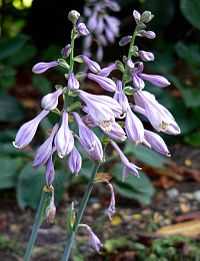 Flowers of cv. 'Blue Crinkles' Wikipedia • Commons • Wikibooks (horticulture) • Wikibooks (subject) • Wikispecies • Fruit and seed clock | Profile for Hosta (Hosta)
Recent Logs
| ||||||||||
Global data:
Temperate zone season(s): Early Summer, Late Summer, Late Summer, Early Fall
Lepidium virginicum
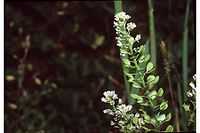 Lepidium virginicum Wikipedia • Commons • Wikibooks (horticulture) • Wikibooks (subject) • Wikispecies • Fruit and seed clock | Profile for Lepidium virginicum (Virginia pepperweed)
Recent Logs
| ||||||||||||||||
Global data:
Temperate zone season(s): Early Summer, Mid Summer, Late Summer, Early Fall, Mid Fall, Late Fall
Leucanthemum vulgare
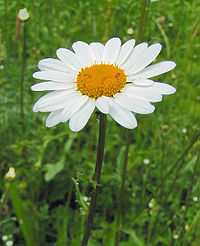 Head Wikipedia • Commons • Wikibooks (horticulture) • Wikibooks (subject) • Wikispecies • Fruit and seed clock | Profile for Leucanthemum vulgare (Oxeye Daisy)
Recent Logs
| ||||||||
Global data:
Temperate zone season(s): Late Spring, Early Summer, Mid Summer
Lythrum salicaria
 Flowering plant Wikipedia • Commons • Wikibooks (horticulture) • Wikibooks (subject) • Wikispecies • Fruit and seed clock | Profile for Lythrum salicaria (Purple Loosestrife)
Recent Logs
| ||||||||
Global data:
Temperate zone season(s): Early Summer, Mid Summer, Late Summer, Early Fall
Melampyrum lineare
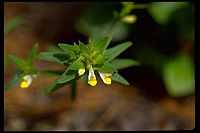 Wikipedia • Commons • Wikibooks (horticulture) • Wikibooks (subject) • Wikispecies • Fruit and seed clock | Profile for Melampyrum lineare (Cow-wheat)
Recent Logs
| ||||||||||||
Global data:
Temperate zone season(s): Early Summer, Mid Summer, Late Summer
Melilotus alba
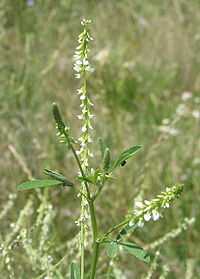 Flowering plant Wikipedia • Commons • Wikibooks (horticulture) • Wikibooks (subject) • Wikispecies • Fruit and seed clock | Profile for Melilotus alba (White Sweet Clover)
Recent Logs
| ||||||||||||
Global data:
Temperate zone season(s): Early Summer, Mid Summer, Late Summer, Early Fall, Mid Fall
Mitchella repens
| Wikipedia • Commons • Wikibooks (horticulture) • Wikibooks (subject) • Wikispecies • Fruit and seed clock | Profile for Mitchella repens (Partridge Berry)
Recent Logs
| ||||||||||||||
Global data:
Temperate zone season(s): Early Summer, Mid Summer
Mollugo verticillata
.jpg) Mollugo verticillata Wikipedia • Commons • Wikibooks (horticulture) • Wikibooks (subject) • Wikispecies • Fruit and seed clock | Profile for Mollugo verticillata (Carpetweed)
Recent Logs
| ||||||||||||
Global data:
Temperate zone season(s): Early Summer, Mid Summer, Late Summer, Early Fall, Mid Fall
Monotropa uniflora
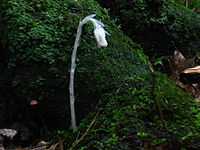 Wikipedia • Commons • Wikibooks (horticulture) • Wikibooks (subject) • Wikispecies • Fruit and seed clock | Profile for Monotropa uniflora (Indian Pipe)
Recent Logs
| ||||||||||||||||||
Global data:
Temperate zone season(s): Early Summer, Mid Summer, Late Summer, Early Fall
Nymphaea odorata
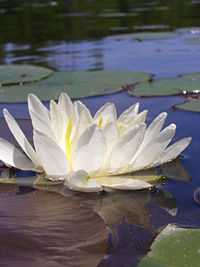 Wikipedia • Commons • Wikibooks (horticulture) • Wikibooks (subject) • Wikispecies • Fruit and seed clock | Profile for Nymphaea odorata (White Water Lily)
Recent Logs
| ||||||||||||||||
Global data:
Temperate zone season(s): Early Summer, Mid Summer, Late Summer
Nymphoides cordata
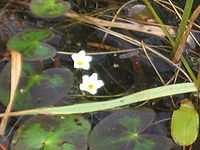 Wikipedia • Commons • Wikibooks (horticulture) • Wikibooks (subject) • Wikispecies • Fruit and seed clock | Profile for Nymphoides cordata (Floating Heart)
Recent Logs
| ||||||||||||||
Global data:
Temperate zone season(s): Mid Summer, Late Summer
Plantago lanceolata
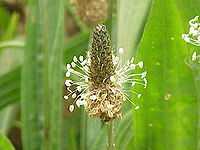 Inflorescence Wikipedia • Commons • Wikibooks (horticulture) • Wikibooks (subject) • Wikispecies • Fruit and seed clock | Profile for Plantago lanceolata (Ribwort Plantain)
Recent Logs--Anna reg 20:54, 29 April 2010 (UTC)
| ||||||||||||
Global data:
Temperate zone season(s): Late Spring, Early Summer, Mid Summer, Late Summer, Early Fall, Mid Fall
Plantago major
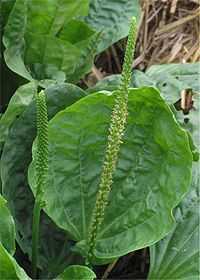 Flowering spike Wikipedia • Commons • Wikibooks (horticulture) • Wikibooks (subject) • Wikispecies • Fruit and seed clock | Profile for Plantago major (Broadleaf Plantain)
Recent Logs
| ||||||||||
Global data:
Temperate zone season(s): Early Summer, Mid Summer, Late Summer
Potentilla arguta
 Wikipedia • Commons • Wikibooks (horticulture) • Wikibooks (subject) • Wikispecies • Fruit and seed clock | Profile for Potentilla arguta (Tall Cinquefoil)
Recent Logs
| ||||||||||||
Global data:
Temperate zone season(s): Early Summer, Mid Summer, Late Summer, Early Fall
Phytolacca americana
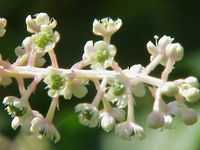 Inflorescence Wikipedia • Commons • Wikibooks (horticulture) • Wikibooks (subject) • Wikispecies • Fruit and seed clock | Profile for Phytolacca americana (Pokeweed)
Recent Logs
| ||||||
Global data:
Temperate zone season(s): Early Summer, Mid Summer, Late Summer, Early Fall, Mid Fall
Pyrola
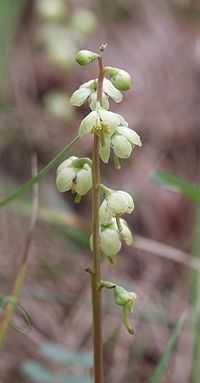 Pyrola chlorantha Wikipedia • Commons • Wikibooks (horticulture) • Wikibooks (subject) • Wikispecies • Fruit and seed clock | Profile for Pyrola (Pyrola)
Recent Logs
| ||||||||||
Global data:
Rhus typhina
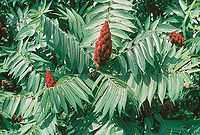 Foliage and fruit Wikipedia • Commons • Wikibooks (horticulture) • Wikibooks (subject) • Wikispecies • Fruit and seed clock | Profile for Rhus typhina (Staghorn Sumac)
Recent Logs
| ||||||||||||
Global data:
Temperate zone season(s): Early Summer
Robinia pseudoacacia
.jpg) Inflorescences Wikipedia • Commons • Wikibooks (horticulture) • Wikibooks (subject) • Wikispecies • Fruit and seed clock | Profile for Robinia pseudoacacia (Black Locust)
Recent Logs
| ||
Global data:
Temperate zone season(s): Late Spring
Rosa
 Flowers Wikipedia • Commons • Wikibooks (horticulture) • Wikibooks (subject) • Wikispecies • Fruit and seed clock | Profile for Rosa (Rose)
Recent Logs
| ||||||||||||||
Global data:
Temperate zone season(s): Late Spring, Early Summer, Mid Summer, Late Summer, Early Fall Mid Fall, Late Fall
Rubus pensilvanicus
| Flowering branch Wikipedia • Commons • Wikibooks (horticulture) • Wikibooks (subject) • Wikispecies • Fruit and seed clock | Profile for Rubus pensilvanicus (Blackberry)
Recent Logs
| ||
Global data:
Temperate zone season(s): Late Spring, Early Summer
Sagittaria graminea
 Wikipedia • Commons • Wikibooks (horticulture) • Wikibooks (subject) • Wikispecies • Fruit and seed clock | Profile for Sagittaria graminea (Grassy Arrowhead)
Recent Logs
| ||||||||||||||
Global data:
Sambucus canadensis
| Inflorescence Wikipedia • Commons • Wikibooks (horticulture) • Wikibooks (subject) • Wikispecies • Fruit and seed clock | Profile for Sambucus canadensis (American Elderberry)
Recent Logs
| ||
Global data:
Temperate zone season(s): Early Summer, Mid Summer
Saponaria officinalis
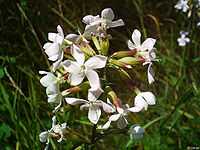 A white-flowered variety Wikipedia • Commons • Wikibooks (horticulture) • Wikibooks (subject) • Wikispecies • Fruit and seed clock | Profile for Saponaria officinalis (Soapwort)
Recent Logs
| ||||||||
Global data:
Temperate zone season(s): Late Spring, Early Summer, Mid Summer, Late Summer, Early Fall, Mid Fall
Silene latifolia
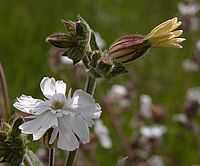 Wikipedia • Commons • Wikibooks (horticulture) • Wikibooks (subject) • Wikispecies • Fruit and seed clock | Profile for Silene latifolia (White Campion)
Recent Logs
| ||
Global data:
Temperate zone season(s): Late Spring, Early Summer, Mid Summer
Silene vulgaris
.jpg) Flowers Wikipedia • Commons • Wikibooks (horticulture) • Wikibooks (subject) • Wikispecies • Fruit and seed clock | Profile for Silene vulgaris (Bladder Campion)
Recent Logs
| ||
Global data:
Tilia americana
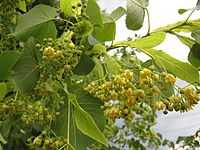 Linden tree (Basswood) blooms Wikipedia • Commons • Wikibooks (horticulture) • Wikibooks (subject) • Wikispecies • Fruit and seed clock | Profile for Tilia americana (Basswood)
Recent Logs
| ||
Global data:
Temperate zone season(s): Early Summer, Mid Summer
Tradescantia
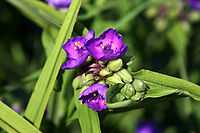 Flowers Wikipedia • Commons • Wikibooks (horticulture) • Wikibooks (subject) • Wikispecies • Fruit and seed clock | Profile for Tradescantia (Spiderwort)
2009 Logs
=====Recent Logs===== | ||||||||||
Global data:
Temperate zone season(s): Late Spring, Early Summer, Mid Summer, Late Summer
Trifolium repens
_Edit.jpg) Inflorescence Wikipedia • Commons • Wikibooks (horticulture) • Wikibooks (subject) • Wikispecies • Fruit and seed clock | Profile for Trifolium repens (White Clover)
Recent Logs
| ||||||||||
Global data:
Temperate zone season(s): Late Spring, Early Summer, Mid Summer, Late Summer, Early Fall, Mid Fall
Viola tricolor
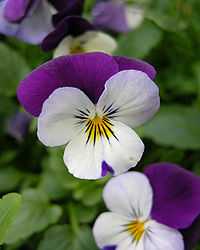 Flowers Wikipedia • Commons • Wikibooks (horticulture) • Wikibooks (subject) • Wikispecies • Fruit and seed clock | Profile for Viola tricolor (Heartsease, Johnny-jump-up)
Recent Logs
| ||
Global data:
Temperate zone season(s): Early Summer, Mid Summer, Late Summer, Early Fall, Mid Fall
Veronica officinalis
| Wikipedia • Commons • Wikibooks (horticulture) • Wikibooks (subject) • Wikispecies • Fruit and seed clock | Profile for Veronica officinalis (Heath Speedwell)
Recent Logs
| ||||||||||||
Global data:
